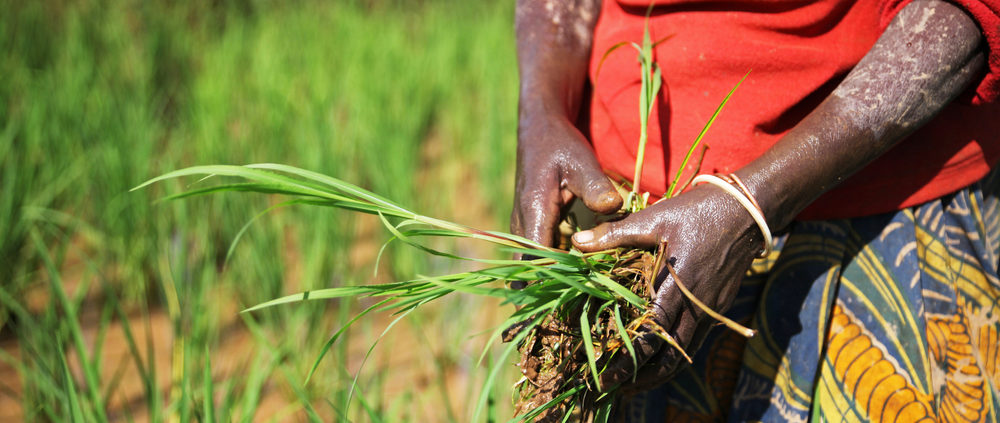Improving the Plants that Africans Eat and Breeders Neglect
News from The Economist
November 23, 2017
CASSAVA and sweet potatoes. Lablab beans and water berries. Bitter gourds and sickle sennas. Elephant ears and African locusts. Some will be familiar to readers in rich countries. Others, probably not. Elephant ears, for example, are leafy vegetables. African locusts are tree-borne legumes. All, however, are standard fare in various parts of Africa. What they also have in common is that they are, from the point of view of plant breeders, orphans. They are neglected by breeders because they are not cash crops. Conversely, they are not cash crops because they are neglected by breeders.
That neglect matters. The cereals which dominate human diets—rice, wheat and maize—have had their yields and nutritional values boosted over the years by scientific breeding programmes. In the modern era of genomics, they have had their DNA scrutinised down to the level of individual base pairs, the molecular letters in which genetic information is written. They are as far removed, nutritionally, from their ancestors of as little as two centuries ago as those ancestors were from the wild plants which begat them. Orphan crops have yet to undergo such a genetic revolution.
Even for adults, a lack of calories and essential nutrients is harmful. For children it can be devastating. Poor childhood nutrition leads to stunting—inadequate bodily development, including the development of the brain. A report published by the World Health Organisation on November 16th suggests that almost a third of Africa’s children, nearly 60m of them, are stunted. And stunted children grow into adults unable to achieve their potential. Researchers at the World Bank reckon the effects of stunting have reduced Africa’s GDP by 9-10% from what it would otherwise be.
One way to reduce stunting would be to improve the crops that Africans, particularly those in the countryside, actually eat—in other words, orphan crops. Such improvement is the purpose of two recent, interrelated projects that are now getting into their strides. Both are based in Nairobi and are conducted under the auspices of the World Agroforestry Centre, an international non-governmental research organisation. One is the African Orphan Crops Consortium (AOCC). The other is the African Plant Breeding Academy. The AOCC’s task is to obtain complete sequences of the DNA of 101 neglected food crops. The academy’s is to disseminate those (and much else besides that relates to crop breeding) to young scientists from universities and other institutes around the continent, who visit Nairobi for the purpose.
The orphanage
The AOCC’s founding spirit is Howard-Yana Shapiro. Dr Shapiro’s day job is chief agricultural officer of Mars, a big American food and confectionery business. As part of that business, Mars’s scientists once sequenced the genome of cacao, the source of chocolate, in order to improve one of the firm’s most important raw materials. A chance meeting between Dr Shapiro and Ibrahim Mayaki, the head of an African development agency called NEPAD, planted in Dr Shapiro’s mind the idea that what was being done for cacao could equally be done for other tropical crops. The pair then recruited Tony Simons, who runs the World Agroforestry Centre, and Rita Mumm, a plant geneticist at the University of Illinois, and in 2013 this group launched both the consortium and the academy.
So far, the AOCC’s researchers have fully sequenced the genomes of ten of their targets. They have partially sequenced those of 27 others. Once full genomes are available, the differences between those of different natural varieties of the same species, known as landraces, can be identified. In particular, detailed sequencing enables maps of DNA markers within a genome to be made. These markers can then be used to chart the movement of blocks of DNA from parent to offspring when different landraces are crossed. This makes it much easier to find out what contributions particular bits of DNA are making to a plant, and thus speeds up the process of breeding new varieties that either have better yields (because of virus-, pest- or drought-resistance, for example) or better nutritional value (enhanced vitamin content, say), or both.
The academy, meanwhile, has, since its foundation, brought in 81 researchers from all parts of Africa for what are, in effect, masterclasses from the world’s top plant-breeding specialists. These include lectures on the consortium’s latest results, so that the visitors can begin to apply those results to their work.








